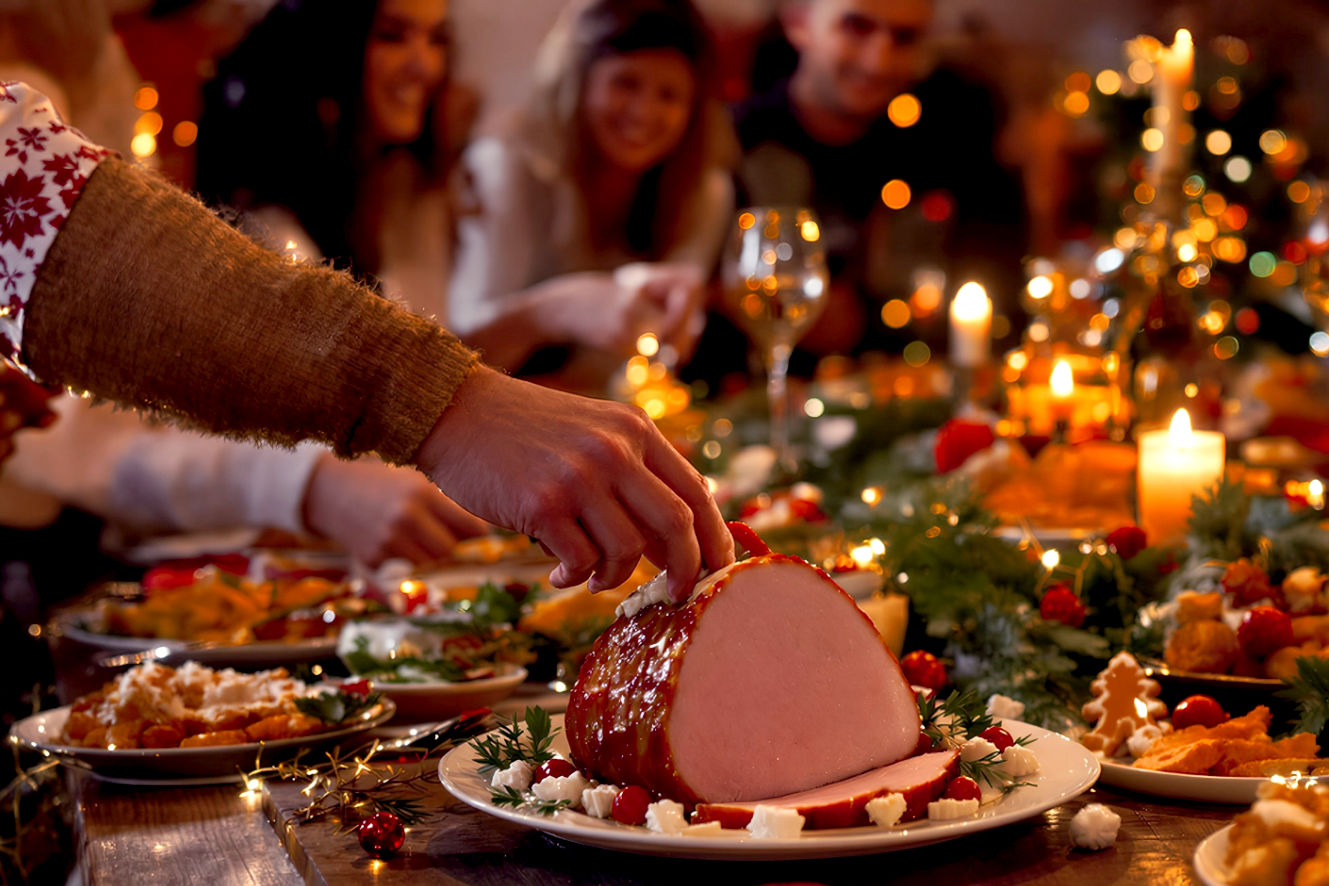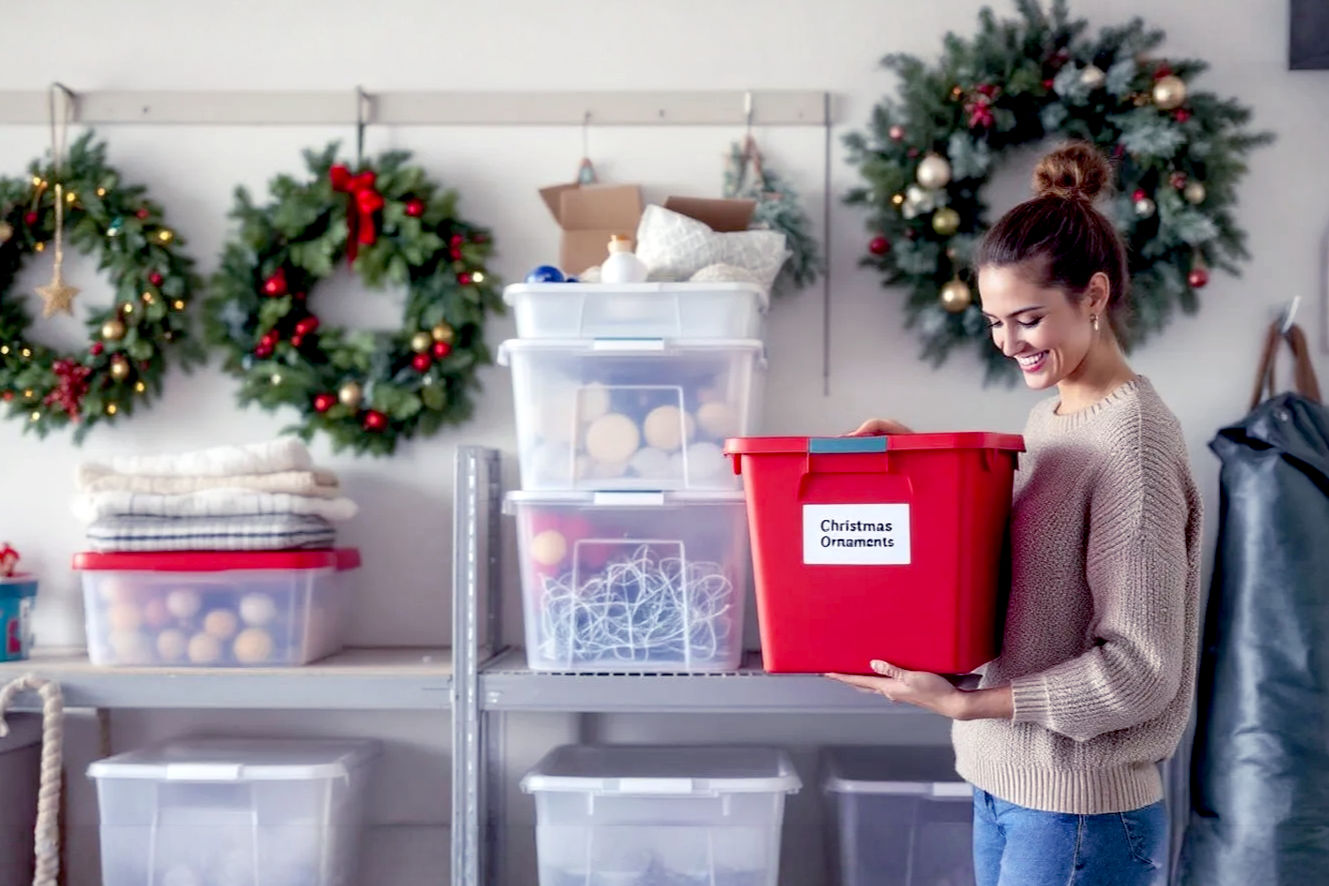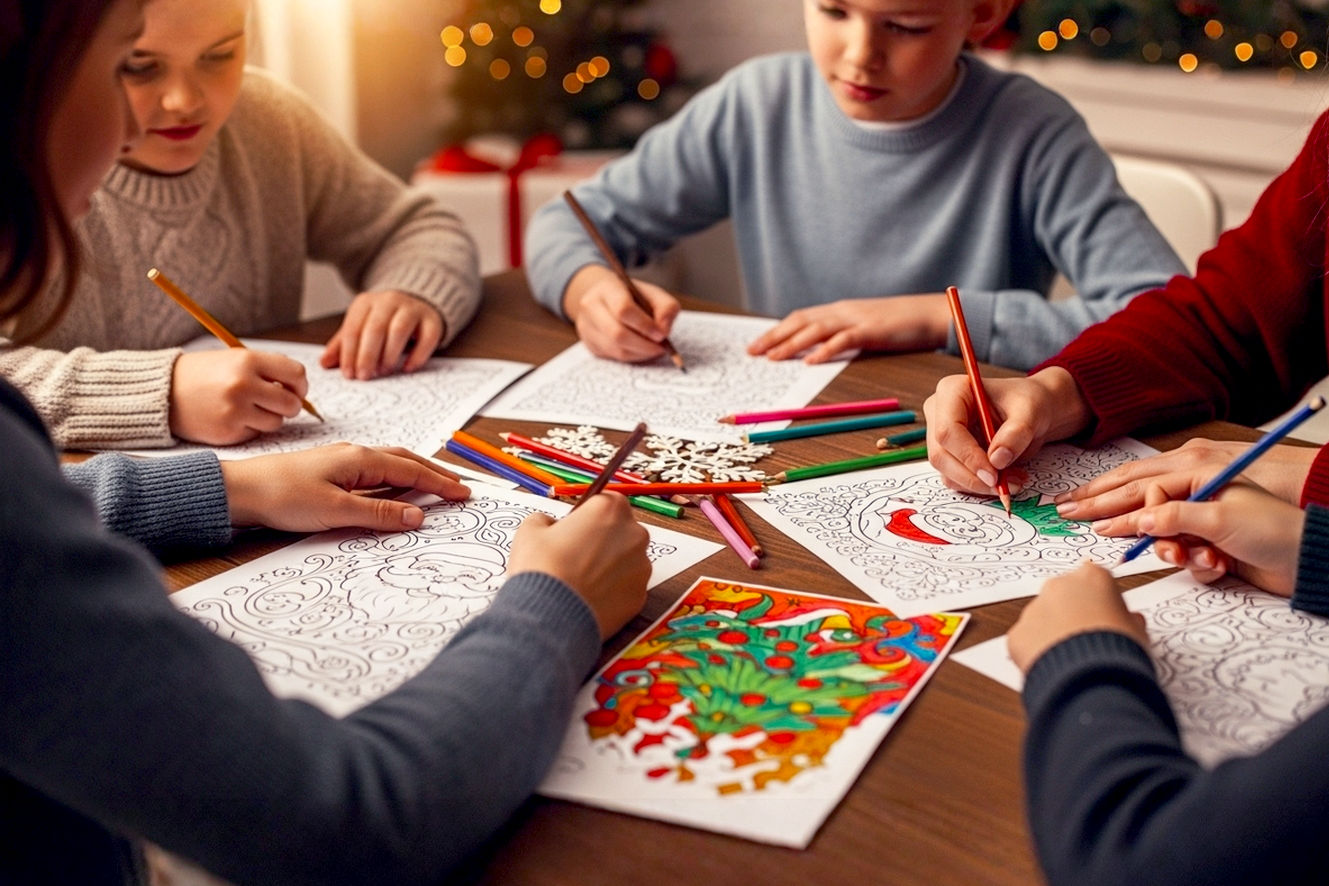This post may contain affiliate links. If you make a purchase through these links, we may earn a commission at no additional cost to you.
The Christmas season, with its whirlwind of festivities and extended breaks, presents both an opportunity and a challenge for parents and educators. The opportunity lies in leveraging the holiday theme to create a fun, engaging learning environment. The challenge is preventing the “learning slide”—the decline in academic skills that can occur during long periods away from the classroom. Engaging Xmas worksheets and holiday learning activities are far more than simple time-fillers; they are a strategic tool for maintaining educational momentum, fostering creativity, and deepening a child’s understanding of the world around them.
This guide will provide a truly comprehensive exploration of this topic, from the historical roots of holiday-themed education to the psychological benefits, practical applications, and future trends. We will delve into the specific types of worksheets available, discuss how to select the best ones for different age groups, and offer actionable advice for turning these activities into meaningful, memorable learning experiences.
Historical and Societal Context: How Holiday Learning Evolved
The concept of using holiday themes in educational materials isn’t new; it’s a practice that has evolved significantly alongside changes in pedagogy and societal norms. Understanding this history provides a deeper appreciation for the role these resources play today.
From Drudgery to Delight: The Evolution of Educational Tools
- Early Educational Materials: In the 19th and early 20th centuries, education was often rigid and focused on rote memorization. Textbooks were dry, and supplemental materials were rare. The idea of “fun” or “thematic” learning was largely absent, especially in formal settings. The holiday season was a break from this, but there were few structured educational activities to fill the void.
- The Rise of Progressive Education: The mid-20th century saw the rise of progressive education movements, which championed the idea that learning should be experiential, engaging, and relevant to a child’s life. This shift paved the way for incorporating everyday themes, including holidays, into lessons. Educators began to see the potential of using Christmas as a context for practicing skills, rather than just a distraction from them.
- The Print Revolution and DIY Education: With the widespread availability of home printers and the internet in the late 20th and early 21st centuries, the creation and distribution of supplemental learning materials exploded. What was once a niche offering from small educational publishers became a vast, free, and easily accessible market. Websites and blogs dedicated to providing printable, holiday-themed worksheets became a staple for both teachers and homeschooling parents.
The Societal Role of Holiday Learning Worksheets
- Bridging the Home-School Divide: These resources act as a vital bridge between the structured learning of school and the informal education that happens at home. They empower parents to take an active role in their child’s education in a way that feels natural and celebratory, not like a chore. The shared activity of completing a Christmas-themed worksheet can create a special bonding experience.
- A Tool for Skill Preservation: Societal and educational studies have long recognized the phenomenon of “summer learning loss,” or “summer slide.” The shorter, but still significant, winter break presents a similar challenge. Worksheets provide a simple, low-stakes method for reinforcing key academic skills, from basic math facts to reading comprehension, ensuring a smoother transition back to school in the new year.
- Supporting Diverse Learning Needs: The modern landscape of holiday learning resources is highly diversified, offering materials that cater to different learning styles and abilities. Parents and teachers can find worksheets with visual cues for visual learners, hands-on activities for kinesthetic learners, and simplified instructions for students who need extra support, making education more inclusive and adaptable.
The Psychological and Developmental Benefits of Thematic Learning
The appeal of using Christmas-themed materials isn’t just about making learning “fun.” There’s a strong psychological and developmental basis for its effectiveness. Thematic learning, particularly with a beloved holiday, can significantly enhance a child’s engagement, memory, and cognitive development.
The Power of Context and Association
- Anchoring Concepts in Memory: When a new concept—like multiplying fractions or identifying parts of speech—is presented in a familiar, exciting context (like decorating a Christmas tree or writing a letter to Santa), the brain forms stronger associations. This process, known as context-dependent memory, makes the information easier to recall later because it’s linked to a positive and memorable event. A worksheet that requires a child to solve a math problem to “unwrap” a picture of a gift provides a stronger memory hook than a standard, abstract problem.
- Emotional Engagement and Motivation: Emotions play a crucial role in learning. A child’s emotional state—their excitement for Christmas—can be leveraged to boost their intrinsic motivation to learn. Instead of feeling like they have to “do school,” they’re engaging in a holiday-themed activity. This shift in perception reduces anxiety and resistance, making the learning process more enjoyable and, consequently, more effective.
Fostering Creativity, Critical Thinking, and Fine Motor Skills
- Creativity and Imagination: Many holiday worksheets go beyond simple fill-in-the-blank questions. They encourage children to draw, color, write stories, and design things. A worksheet asking a child to design a new sleigh for Santa or write a story from an elf’s perspective actively engages their imagination and creative problem-solving skills.
- Developing Fine Motor Skills: Coloring pages, dot-to-dot puzzles, cutting and pasting activities, and mazes are all staple components of Christmas learning packets. These seemingly simple tasks are actually crucial for developing and refining fine motor skills—the coordinated movements of the small muscles in the hands and fingers. Strong fine motor skills are essential for everything from legible handwriting to using a computer mouse and buttoning a shirt.
- Sharpening Critical Thinking: Thematic puzzles and logic problems, like a worksheet that asks a child to deduce which reindeer ate the last cookie based on a series of clues, are excellent for developing critical thinking and deductive reasoning. They require students to analyze information, identify patterns, and draw conclusions in a fun, non-threatening context.
The Different Types of Engaging Xmas Worksheets
The sheer variety of holiday learning resources can be overwhelming. To make informed choices, it’s essential to understand the different types of worksheets available and the specific skills they target.
For Early Learners (Pre-K to Grade 2)
- Math Worksheets: These focus on foundational concepts.
- Counting and Number Recognition: Activities like counting presents, ornaments on a tree, or gingerbread men. A classic example is a worksheet where a child counts the items in a box and circles the corresponding number.
- Simple Addition and Subtraction: Basic problems framed in a holiday context, such as “Santa has 5 reindeer and 3 more join. How many does he have now?”
- Pattern Recognition: Coloring or drawing patterns with Christmas colors (red, green, white) or shapes (stars, bells, snowflakes).
- Shapes and Colors: Worksheets that ask children to identify and color shapes on a holiday picture.
- Language Arts Worksheets: These build a foundation for literacy.
- Alphabet Tracing and Recognition: Tracing letters with holiday words like “S” for Santa or “E” for elf.
- Phonics and Beginning Sounds: Identifying the first sound in holiday words or filling in the missing letter.
- Story Starters and Writing Prompts: Simple prompts like “If I were an elf, I would…” to encourage early writing.
- Science and Creative Worksheets:
- Nature and Sensory Exploration: Matching pictures of winter animals, or drawing a picture of what they see outside in the snow.
- Crafts and Coloring: Coloring pages of classic holiday scenes or simple cut-and-paste crafts like creating a paper ornament.
For Elementary and Middle Schoolers (Grades 3-8)
- Math Worksheets: These move into more complex problem-solving.
- Multiplication and Division Drills: Hidden picture puzzles where solving a math problem reveals a pixel of a Christmas image. These are far more engaging than a simple list of problems.
- Word Problems: Multi-step word problems involving concepts like money (calculating the total cost of presents) or time (figuring out how long it takes to travel to the North Pole).
- Fractions, Decimals, and Percentages: Applying these concepts to holiday scenarios, such as “What fraction of the cookies are chocolate chip?” or “The store is having a 25% off sale on decorations.”
- Language Arts Worksheets: These focus on deeper literacy skills.
- Reading Comprehension: Short passages about holiday traditions, the history of Santa Claus, or popular Christmas stories, followed by comprehension questions.
- Grammar and Punctuation: Identifying parts of speech, correcting sentences, or using proper punctuation in holiday-themed sentences.
- Creative Writing and Poetry: More advanced writing prompts, such as writing a descriptive paragraph about a festive holiday meal or crafting a poem about the first snowfall. A fun twist is a “Mad Libs” style worksheet with a Christmas story.
- Science and Social Studies Worksheets: These connect learning to real-world phenomena.
- Science: Worksheets on the science of snowflakes, the biology of reindeer, or the physics of a toy factory conveyor belt.
- Social Studies: Exploring the history of Christmas traditions around the world, or mapping Santa’s global journey using latitude and longitude coordinates.
Practical Applications for Parents and Educators
The key to a successful holiday learning experience is not just finding the right worksheets, but knowing how to use them effectively. Here are some actionable strategies for both parents and teachers.
For Parents: Integrating Learning into Holiday Fun
- Create a “Learning Advent Calendar”: Instead of candy, place a small, festive worksheet or learning activity for each day leading up to Christmas. This builds anticipation and makes learning a daily treat.
- Gamify the Experience: Turn the worksheets into a game. Time your child to see how fast they can complete a multiplication sheet, or offer a small prize for finishing a packet of activities. The prize could be a special Christmas cookie or the right to pick the next holiday movie.
- Connect Worksheets to Real-Life Activities: If a worksheet is about measuring ingredients for cookies, take it to the kitchen and bake together. If it’s about budgets, have your child “purchase” presents from a catalog using a fake budget. This connects abstract concepts to concrete, hands-on experiences.
For Educators: Maximizing Impact in the Classroom
- Utilize as “Brain Breaks”: Instead of a standard worksheet, use a Christmas-themed activity as a short, engaging break between more rigorous lessons. A coloring page with a math puzzle on the back can be a great transitional tool.
- Incorporate into Centers or Stations: Set up different learning centers with various holiday activities. One center might have Christmas math worksheets, another a creative writing station, and a third a science experiment (like making a “snowstorm” in a jar). This allows students to rotate and engage with different subjects.
- Create a Thematic Unit: Build an entire week’s curriculum around a holiday theme. Students can read about the history of the season, solve math problems related to gift-giving, and write stories from the perspective of a holiday character.
Common Pitfalls and How to Avoid Them
Even with the best intentions, using holiday worksheets can go wrong. It’s crucial to be aware of the common pitfalls and proactively work to prevent them.
Pitfall #1: The “Busy Work” Trap
- The Problem: Worksheets that are overly repetitive, too easy, or lack a clear learning objective can feel like “busy work.” This leads to boredom and can actually foster a negative association with learning.
- The Solution: Choose worksheets that are genuinely challenging and engaging. Look for activities that require critical thinking, creativity, or problem-solving, not just rote repetition. For every worksheet, ask yourself, “What specific skill is my child practicing here?” If the answer isn’t clear, find a better resource.
Pitfall #2: Forcing the Fun
- The Problem: Pushing a child to complete a worksheet when they’re not in the mood can backfire, turning a potentially fun activity into a source of stress and conflict.
- The Solution: Present the worksheets as an option, not a mandate. Frame them as a special holiday activity rather than a chore. “Would you like to solve a Christmas mystery puzzle or do some Christmas coloring?” Giving a child a choice empowers them and increases their buy-in.
Pitfall #3: Lack of Variety
- The Problem: Relying on only one type of worksheet, such as just math or just coloring, can neglect other important skills and lead to burnout.
- The Solution: Create a balanced mix of activities. Include math, language arts, science, and creative arts. Incorporate hands-on activities, like Christmas-themed science experiments, to break up the “pen and paper” routine. This holistic approach ensures a well-rounded and engaging learning experience.
The Future of Holiday Learning: Beyond the Printed Page
While printable worksheets remain a powerful and accessible tool, the landscape of holiday learning is rapidly evolving, with digital tools and interactive technologies playing an increasingly significant role.
The Rise of Interactive Digital Resources
- Virtual Worksheets and Games: Educational apps and websites now offer interactive holiday-themed activities that go far beyond what a static worksheet can provide. These resources often include immediate feedback, animated visuals, and adaptive difficulty levels that adjust to a child’s performance.
- Augmented Reality (AR) and Virtual Reality (VR): The future of holiday learning may involve AR experiences where children can use a tablet to “scan” a Christmas worksheet and watch the characters come to life, or VR simulations that transport them to Santa’s workshop to solve engineering challenges. While still niche, these technologies represent the next frontier of immersive educational experiences.
The Blended Approach: The Best of Both Worlds
The most effective strategy for the future will likely be a blended learning approach, combining the tactile, hands-on experience of physical worksheets with the dynamic, interactive nature of digital tools. A child might complete a reading comprehension worksheet on a printed page, and then use a tablet to watch an animated short of the story and answer a follow-up quiz. This combination leverages the strengths of both mediums, providing a truly comprehensive and engaging learning environment.
Final Thoughts: A Gift of Learning
Engaging Christmas worksheets for holiday learning are more than just a seasonal novelty; they are a thoughtfully designed tool rooted in sound educational principles. By understanding the historical context, psychological benefits, and practical applications, parents and educators can move beyond the superficial and transform these simple resources into powerful instruments for fostering a love of learning. These activities help maintain academic skills and create positive, lasting memories that connect the magic of the holiday season with the joy of discovery and intellectual growth. The gift of a fun, educational holiday is one that keeps giving long after the decorations are packed away.






